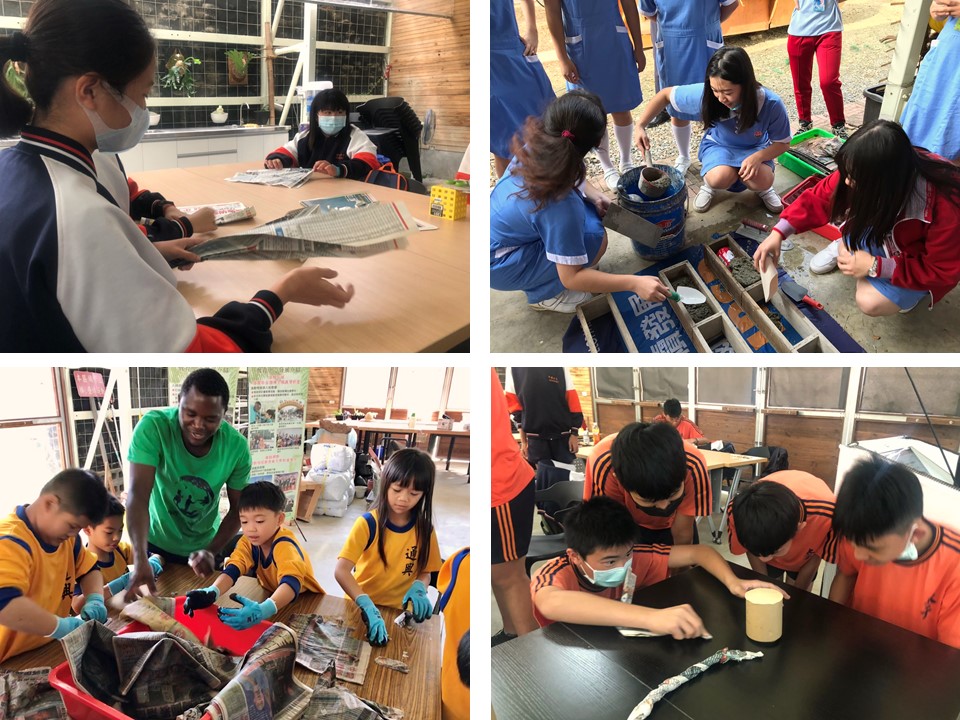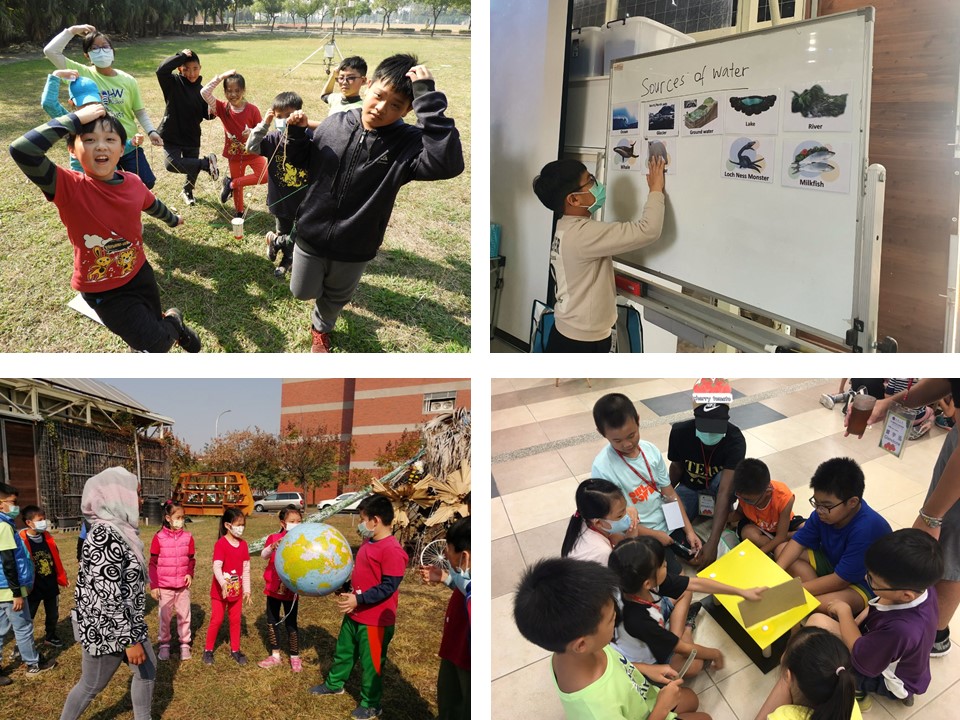Introduction to Environmental Education
Eco-center's environmental education program aims at awareness, knowledge, environmental ethics, civic action skills, and civic action experience. The main characteristic of the program revolves around the International Roots & Shoots action and spirit. Based on learning experience and age differences, the program allows the student to obtain the appropriate concept. The eco-center expands and develops Taiwanese students' local experience into an international exchange…
The design concept of the program combines localization and the Roots & Shoots international action plan to develop the series "Paperbrick Implement" and "Water protection". The development of the two curriculum series both revolves around the goals of Roots & Shoots “care for the environment”, “care for the community” and “care for the animals”.
[Highlights of Paper Bricks] The curriculum takes "sustainability", "energy conservation" and "reduction of waste" as it’s core values and is developed into three sets of courses for the middle, high school, and parent-child/community. We want to teach students about the “Sustainable use of resources”, there are the two key points: energy flow and material cycle. Energy flow is talking about earth carbon footprint through the building material issues. Material cycle is talking about how do people do the 3R and giving these resources a new life. And do the Paperbricks making activity. So in this class, we have three units to teach them.
UNIT1: The secret of paper: In this unit, we will teach student the produce of the paper and in these process, it was cause the energy and pollution. And introduce the forest protection certification label in different product. And follow the Basic principles of physics, let students try to use paper to finish the challenges.
UNIT2: Paperbrick Implementation: In this unit, we want to let students do the paperbrick by themselves. At the beginning, we will show the video is about the Da MorLee farm and Mr. John. And the 3R (Reduce, Reuse, Recycle) in paperbrick. Paperbrick has the great thermal insulation effect.

[New Hope for Erren River] To a great extent, river water quality can reflect the development and utilization of land and the natural environmental factors in the watershed. This activity will use the Project WET Curriculum and Activity Guide (Sum of the part unit) to distinguish and allow students to reflect on how human behaviors affect a river’s water quality. and what responsibilities humans need to take to maintain this quality.
Unit 1: By using the Erren river’s water environment’s main pollution source, students will be able to distinguish between Point Source Pollution and Non-Point Source Pollution, Finally, we will discuss how to apply the best management practices, and consider whether they can be applied in our own actions or community environment to achieve substantial improvement. We will use the River picture book’s images of river development to understand the history of river watersheds in the course of human development.
Unit 2: Following the previous instruction unit above, students will learn how to use WWMD test kits and understand why Turbidity, Dissolved oxygen, PH value, and the water temperature has an influence on water bodies and aquatic organism. We will encourage people in all countries to take an interest in the water environment, actively promote public monitoring of environmental water quality, and work together to protect the water resources on earth. At the same time, actual water quality tests will be carried out at monitoring points on campus.

[Water Magician]The Earth is a watery place. But just how much water exists on, in, and above our planet? About 71 percent of the Earth's surface is water-covered, and the oceans hold about 96.5 percent of all Earth's water. Water also exists in the air as water vapor, in rivers and lakes, in icecaps and glaciers, in the ground as soil moisture and in aquifers. The geographical distribution of water is highly uneven. We need to think about the right of the water usage in all living creature.
Unit 1: 【Blue planet and One for all】This unit is from Projcet WET curriculum and Activity Guide. We want to let students know how much water account for the all earth. Where is Earth's water located? ice and glaciers, freshwater is in the ground and so on.
Unit 2: 【Rainwater Recycling activity】The ecological benefits of recycling rainwater are potentially huge. Rainwater recycling involves collecting rainwater from a building's roof. In this Unit, we want to let students know the rainwater recycling system in Jane Goodall classroom. And we provide the Model house and some material. Let them to design the rainwater recycling.

